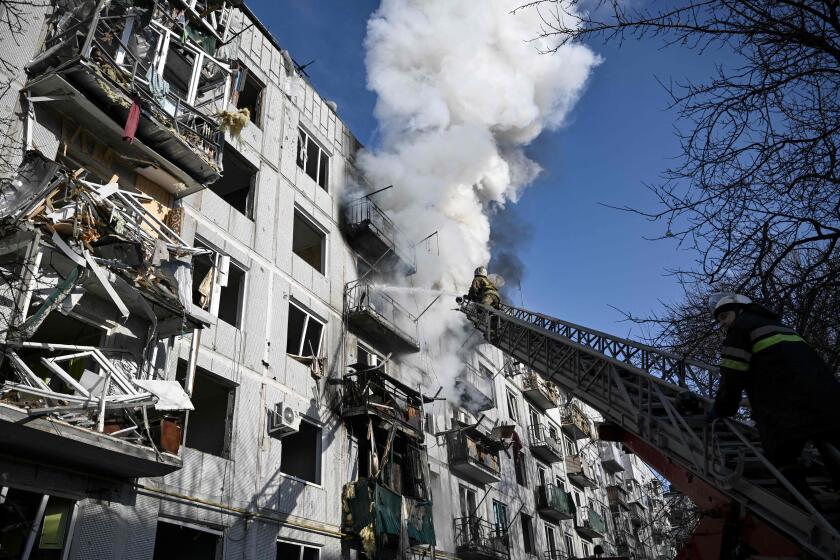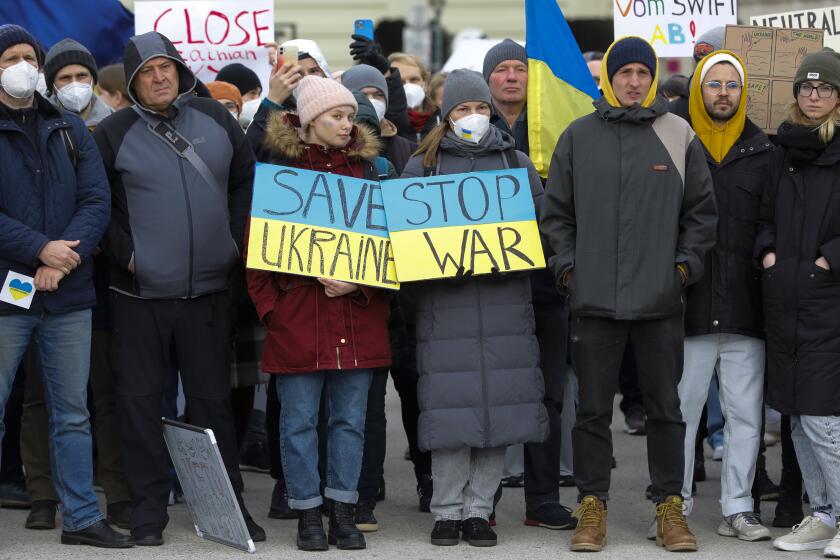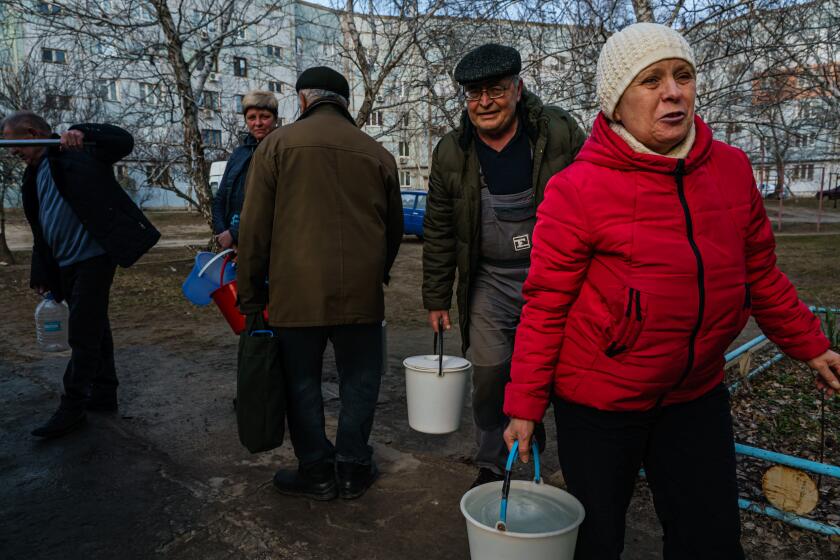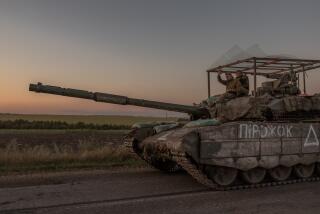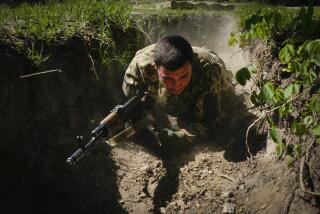Op-Ed: Russia’s got ‘shock and awe’ down, but can Putin outlast Ukraine’s resistance?
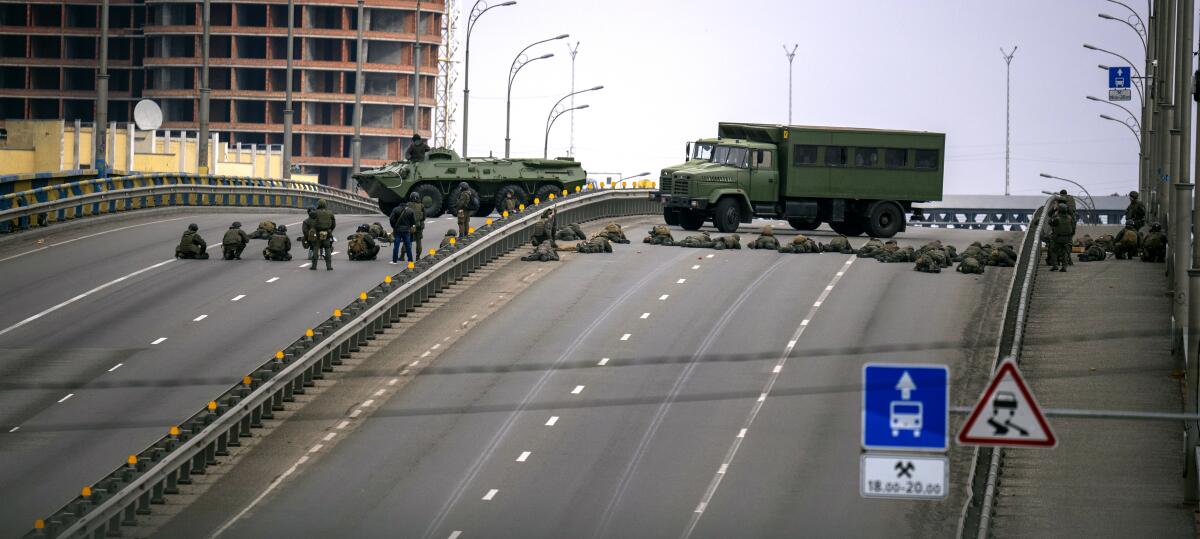
How far will Vladimir Putin go with his “special military operation” in Ukraine? What’s his plan past taking Kyiv and toppling Ukraine’s democratically elected government?
You have to wonder if he knows what U.S. Army Chief of Staff Gen. Eric Shinseki would advise.
On Feb. 25, 2003, before the Iraq war started, Shinseki was asked by Sen. Carl Levin (D-Mich.) in a Senate Armed Forces Committee hearing about the force necessary to seize and then stabilize that country after an invasion. Shinseki replied, “Something on the order of several hundred thousand soldiers.”
“We’re talking about post-hostilities control over a piece of geography that’s fairly significant, with the kinds of ethnic tensions that could lead to other problems,” Shinseki added. “And so it takes a significant ground force presence to maintain a safe and secure environment, to ensure that people are fed, that water is distributed, all the normal responsibilities that go along with administering a situation like this.”
It matters more how wars end than how they start. Remember Iraq? Within weeks, American forces were pulling down Saddam Hussein’s statue in Baghdad. Very quickly, all of Iraq was under our control. And then.
Then the looting. Then no food. Then no water. Then no electricity. Then Abu Ghraib. Then foreign-backed terrorists. Then the insurgency. Then too many of our troops — my troops — went home to be buried.
As Russian forces push deeper into Ukraine in the largest ground war in Europe since World War II, Ukrainian officials urge citizens to fight back.
I served as a lieutenant in a cavalry unit in Iraq in early 2003 and saw firsthand what happens after a ground war, when an army’s mission changes from a dynamic phase to a static one. Our cavalry unit of a little more than a hundred troops was sent to secure cities of several hundred thousand (first Fallujah, then Ramadi). It didn’t go well.
Fast-forward a full military career. I’m now a lieutenant colonel, and last summer I was part of a research team sent to Ukraine to study its defenses against Russian attacks. I was in Kyiv on Ukrainian Independence Day, Aug. 24. The slow-burn war with Russia was proceeding on still-warm embers. That day, a Ukrainian soldier was killed on the trench line a half-day’s train ride east of the capital.
Our team was guided for part of the day by Lt. Ilya Kononov, a reservist in the Ukrainian army and recent college grad. A history major, he had answers to all our questions. We kept hearing a call-and-response from the enormous crowd gathered in Maidan square to celebrate independence. The lieutenant told us it was a kind of national salute — translated, it started “Glory to Ukraine,” with the response “Glory to Heroes.” The next day, we met a Ukrainian general who told us directly, without blinking, “We’ll fight the Russians to the death, until the last Ukrainian.”
A world without war, or even borders, for an entire generation of Europeans went up in smoke with Russia’s assault on Ukraine.
It wasn’t lip service. A poll from a few months ago found that 24% of the country would resist an invasion “with a weapon in hand.” With Ukraine’s population of more than 40 million — and setting aside big-talkers, braggarts and blusterers — that could mean millions of people fighting back against the 190,000 troops Putin sent to overthrow the Zelensky government.
That government has prepared for this moment too. Ukraine’s leaders knew they couldn’t rely on formal military forces alone. At the end of last year, they implemented a national strategy for defense, titled “On the Fundamentals of National Resistance.” It calls for the involvement of the “entire population of Ukraine in the protection of their homeland,” with three protective pillars — the Territorial Defense Forces, military training for civilians and irregular warfare units for “resilience.” And now that resistance operation is a “go.” On Friday, the Ukrainian defense ministry called on this citizen army to “prepare Molotov cocktails” in their defense.
Pundits like to point out that Putin cares more about Ukraine than the West does, but they rarely mention what will matter most in the coming days of the conflict — Ukrainians care more about Ukraine than Russia does. No weapon, no equipment, no technology can ever replace a soldier or a citizen willing to die to protect family and home.
As time goes on, the Russians will learn what we Americans did in 2003. “Shock and awe” fades. What looks like an overwhelming show of force now may not be enough later.
Three organizations with operations in California are helping people in eastern Ukraine, and so is the Red Cross. Here’s how you can contribute.
Because size matters. Ukraine is one-third larger than Iraq. It is more populous than Iraq. At the peak deployment of U.S. and coalition forces in Iraq, the troops numbered about the same as the force Russia has sent into Ukraine. But Russia has fewer active ground forces and reserves to fall back on than the coalition did, if — when — things sour.
There is every reason to believe that while its invasion may go swiftly, Russia is walking into an industrial-strength resistance and even insurgency in Ukraine. If Putin takes much or all of Ukraine, he won’t have the force to hold it. The occupation will bleed the Russian petro-state of resources even more than the world’s sanctions will. This has the makings of our painful time in Iraq, or a second Russian Afghanistan.
Don’t say Gen. Shinseki didn’t warn them.
Lt. Col. ML Cavanaugh directs the Homeland Defense Institute at the U.S. Air Force Academy. These are the author’s views, and not those any other U.S. government agency. @MLCavanaugh
More to Read
A cure for the common opinion
Get thought-provoking perspectives with our weekly newsletter.
You may occasionally receive promotional content from the Los Angeles Times.
